Rick Rozoff ( also in Stop NATO) on April 1, 2010
March 31, 2010
Mongolia: Pentagon Trojan Horse Wedged Between China And Russia
Rick Rozoff
Because of its history, its location and the nations which surround it, Mongolia would seem the last country in the world to host annual Pentagon-led military exercises and to be the third Asian nation to offer NATO troops for the war in Afghanistan.
From the early 1920s until the breakup of the Soviet Union in 1991 Mongolia was the latter nation's longest-standing and in many ways closest political and military ally, its armed forces fighting alongside those of the USSR against the Japanese in World War II. It was not a member of the Warsaw Pact as that alliance was formed in Europe six years after and in response to the creation of NATO in 1949, but Mongolia was a military buffer between the Soviet Union and the Japanese army in China in the Second World War and between it and China during the decades of the Sino-Soviet conflict.
Mongolia is also buried deep within the Asian continent and is the world's second-largest landlocked nation next to Kazakhstan, which is only 21 miles from its western border. Those two countries along with North Korea, impenetrable in most every sense of the word, are the only three that border both China and Russia.
Russia abuts Mongolia along its entire northern frontier and China along its eastern, southern and western borders. There is no way to enter the country except by passing through or over Russia and China.
As such Mongolia would have appeared to be a refuge of non-alignment in a world of rapidly expanding U.S. and NATO penetration of increasingly vast tracts of the earth's surface.
But in the post-Cold War period no country is beyond the Pentagon's reach, either inside or on its borders.
In the last decade alone the U.S. has acquired bases and other military installations and stationed its armed forces throughout parts of the world that it had never penetrated during the Cold War era, including:
Africa: Approximately 2,000 troops and the Pentagon's Combined Joint Task Force-Horn of Africa at Camp Lemonnier in Djibouti in the Horn of Africa.
Black Sea: Seven new air and training bases in Bulgaria and Romania and the de facto control of air, navy, infantry and surveillance bases in Georgia.
Baltic Sea: The activation in April of a Patriot Advanced Capability-3 theater interceptor missile battery in Eastern Poland with an initial contingent of 100 troops to run it.
Middle East: Air bases, forward operating bases, base camps, weapons storage facilities and troops transit centers in Iraq, Jordan and Kuwait and a long-range (2,900-mile) interceptor missile radar facility in Israel staffed by 120 U.S. military personnel.
Central Asia: An air base in Kyrgyzstan through which 35,000 U.S. and NATO troops transit each month for the war in Afghanistan and plans for a new special forces "anti-terrorist" training center in the nation.
South Asia: A proliferation of infantry and air bases in Afghanistan, including the mammoth Bagram Air Field with 25,000 military personnel and contractors. The Bagram military complex has been more than tripled in size since the 2001 invasion and is currently undergoing yet further large-scale expansion.
East Asia: The return of the U.S. military to the Philippines after being ordered to leave by the country's Senate in 1991 with at least 600 troops and two permanent structures in Camp Navarro in Mindanao where the U.S. Joint Special Operations Task Force-Philippines (JSOTF-P) is based.
South America: Seven new military, including air and naval, bases in Colombia agreed upon last summer.
Central America: In addition to the U.S. retaining the use of the Soto Cano Air Base in Honduras for its 550-troop Joint Task Force-Bravo after the military coup d'etat of last June 28, a report surfaced in September of 2009 that U.S. Secretary of State Hillary Clinton had reached an agreement with new Panamanian President Ricardo Martinelli for the opening of two new American naval bases, one each on the Caribbean and Pacific coasts.
Indian Ocean: U.S. Africa Command deployed lethal Reaper "hunter-killer" drones, spy planes and over a hundred service members to Seychelles late last year.
South Pacific: A secretive military satellite base in Western Australia was approved in 2007. The massive expansion of the Andersen Air Force Base and construction of barracks for 8,000 Marines on Guam is underway.
FOR MORE
Stop NATO
Blog site:
Saturday, April 3, 2010
Text Fw: Mongolia: Pentagon Trojan Horse Wedged Between China And Russia
Subscribe to:
Post Comments (Atom)

![[URGENT PLEA: In Update] EMERGENCY in GANGJEONG Since AUG. 24, 2011](http://2.bp.blogspot.com/-3iz8k-USXVY/TlmRYhhIYtI/AAAAAAAAL2c/9dbF85ZIkIs/s227/jejusit.jpg)



![[Solidarity from Japan for the Jeju] 253 individuals and 16 groups/organizations](http://2.bp.blogspot.com/_gnM5QlRx-4c/TR_YeNVE1yI/AAAAAAAAHWQ/ARyf6oQN0S0/S227/jeju_12_10j.jpg)
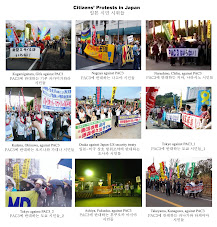
![[Translation] Korean organizations' statement: Immediately cancel the joint ROK-US drill Nov 26](http://2.bp.blogspot.com/_gnM5QlRx-4c/TPOE8VKXHFI/AAAAAAAAGlM/8lryt-8sFjc/S227/1.jpg)
![HOT! [Hankyoreh Hani TV] Beneath the Surface: the investigation into the sinking of the Cheonan](http://4.bp.blogspot.com/_gnM5QlRx-4c/TOI83qht8aI/AAAAAAAAGXU/22SW6Q5ntV8/S227/HaniTV%2BCheonan.gif)

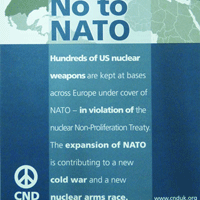

![[Translation]Statement against illegal inspection and unjust lay-off by the Kunsan USAFK!(Nov_2010)](http://4.bp.blogspot.com/_gnM5QlRx-4c/TOPLsVkZMqI/AAAAAAAAGZs/3YnnckIyAaY/S227/gunsan%2Bprotest.gif)
![[Translation] Korean organizations' statement against dispatching special force to the UAE on Nov.](http://4.bp.blogspot.com/_gnM5QlRx-4c/TOP95zHXlCI/AAAAAAAAGak/E0Ug1XtUFfM/S227/antiwarpeace.jpg)
![[Translation] Stop, Joining MD!: South Korean activists' statement and writing on Oct. 25, 2010](http://3.bp.blogspot.com/_gnM5QlRx-4c/TOP7Es4_2sI/AAAAAAAAGac/eWVMPD-U4p0/S227/StopMD.jpg)
![[In Update] People First, NO G-20 (Nov. 6 to 12, Korea)](http://2.bp.blogspot.com/_gnM5QlRx-4c/TJd53XBzHlI/AAAAAAAAFQo/ldO9JPE3eqo/S227/left21_G20.jpg)
![[International Petition] Stop US helipad plan in Okinawa to save great nature](http://4.bp.blogspot.com/_gnM5QlRx-4c/TKC2AHRNzBI/AAAAAAAAFUo/yGWXODTw_uM/S227/yanbaru_w.jpg)

![[Global Network] against the first launch of Quasi-Zenith Satellite, Japan, on Sept. 11, 2010](http://4.bp.blogspot.com/_gnM5QlRx-4c/TIowa1boy4I/AAAAAAAAFDI/82rAi98uq-c/S227/Qzss-45-0_09.jpg)

![[In update] Some collections on the Koreans’ protests against the sanction & war on Iran](http://4.bp.blogspot.com/_gnM5QlRx-4c/TJMvke6t8zI/AAAAAAAAFO4/tamQ8LUnOOA/S227/No+Sanction+on+Iran.jpg)
![[Three International Petitions] to End the Korean war and peace treaty(or peace resolution)](http://1.bp.blogspot.com/_gnM5QlRx-4c/THef7bzWxYI/AAAAAAAAE44/wwdzSDfYhdw/S227/border.jpg)
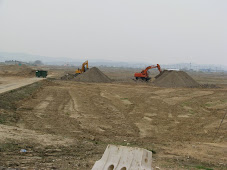


![[Collection of Documents] No Base Learning and Solidarity Program_Korea(June 14 to 20, 2010)](http://1.bp.blogspot.com/_gnM5QlRx-4c/TCTvVuN8NeI/AAAAAAAAEek/8vBJVaHdk10/S227/No-Base-banner.jpg)
![Site Fwd:[John Hines] A U.S. Debate coach’s research trip on the Issues of Korea](http://3.bp.blogspot.com/_gnM5QlRx-4c/TINCO36mzzI/AAAAAAAAE_w/Rds12NcBOXM/S227/Jeju-Peace-Tour.jpg)


![[News Update] Struggle Against the Jeju Naval Base since Jan. 18, 2010](http://1.bp.blogspot.com/_gnM5QlRx-4c/S1vvWaP25uI/AAAAAAAACkg/QvpW1tgOlKM/S226/scrum1.jpg)


![[Urgent] Please spread the Letter!: There was no Explosion! There was no Torpedo! (May 26, 2010)](http://4.bp.blogspot.com/_gnM5QlRx-4c/S_9JmsKEU7I/AAAAAAAAEP8/sAWjSPqxzUI/S227/grounded.jpg)
![Text Fwd: [Stephen Gowans]The sinking of the Cheonan: Another Gulf of Tonkin incident](http://1.bp.blogspot.com/_gnM5QlRx-4c/TAL_FtYKQ-I/AAAAAAAAERE/NEEMijiEcRM/S227/lee-myung-bak.jpg)
![[Japan Focus]Politics in Command: The "International" Investigation into the Sinking of the Cheonan](http://1.bp.blogspot.com/_gnM5QlRx-4c/TBMJ2syJzyI/AAAAAAAAEZU/uTYZccU5vyk/S227/wen_jiabao_and_lee_myungbak.png)
![[Japan Focus] Who Sank the SK Warship Cheonan? A New Stage in the US-Korean War and US-China](http://2.bp.blogspot.com/_gnM5QlRx-4c/S_iQ2vE5ZpI/AAAAAAAAEOU/Oo1SPcAe8FE/S227/buoy_map.gif)
![[Updated on 12/13/10] [Translation Project] Overseas Proofs on the Damages by the Military Bases](http://4.bp.blogspot.com/_gnM5QlRx-4c/S-qSj59gPLI/AAAAAAAAEGM/mwjlFtPE-jo/S227/missile.jpg)
![[International Petition] Close the Bases in Okinawa](http://3.bp.blogspot.com/_gnM5QlRx-4c/S8-z3DYNwNI/AAAAAAAADo4/OswTSchK09M/S227/2.jpg)

![[In Update]Blog Collection: No Korean Troops in Afghanistan](http://4.bp.blogspot.com/_gnM5QlRx-4c/SwnlLD9IewI/AAAAAAAAB9E/oUPssnpNidA/S226/No-Troops-to--Afghanistan.jpg)


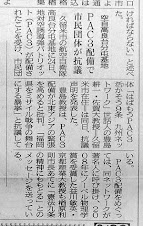

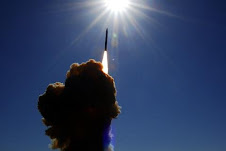






No comments:
Post a Comment